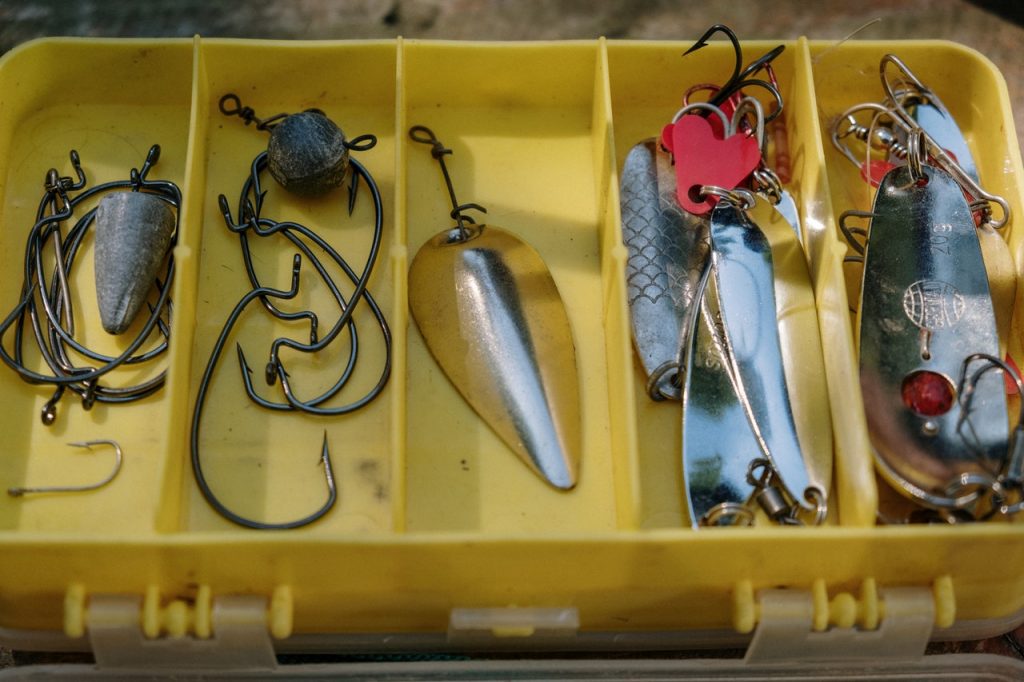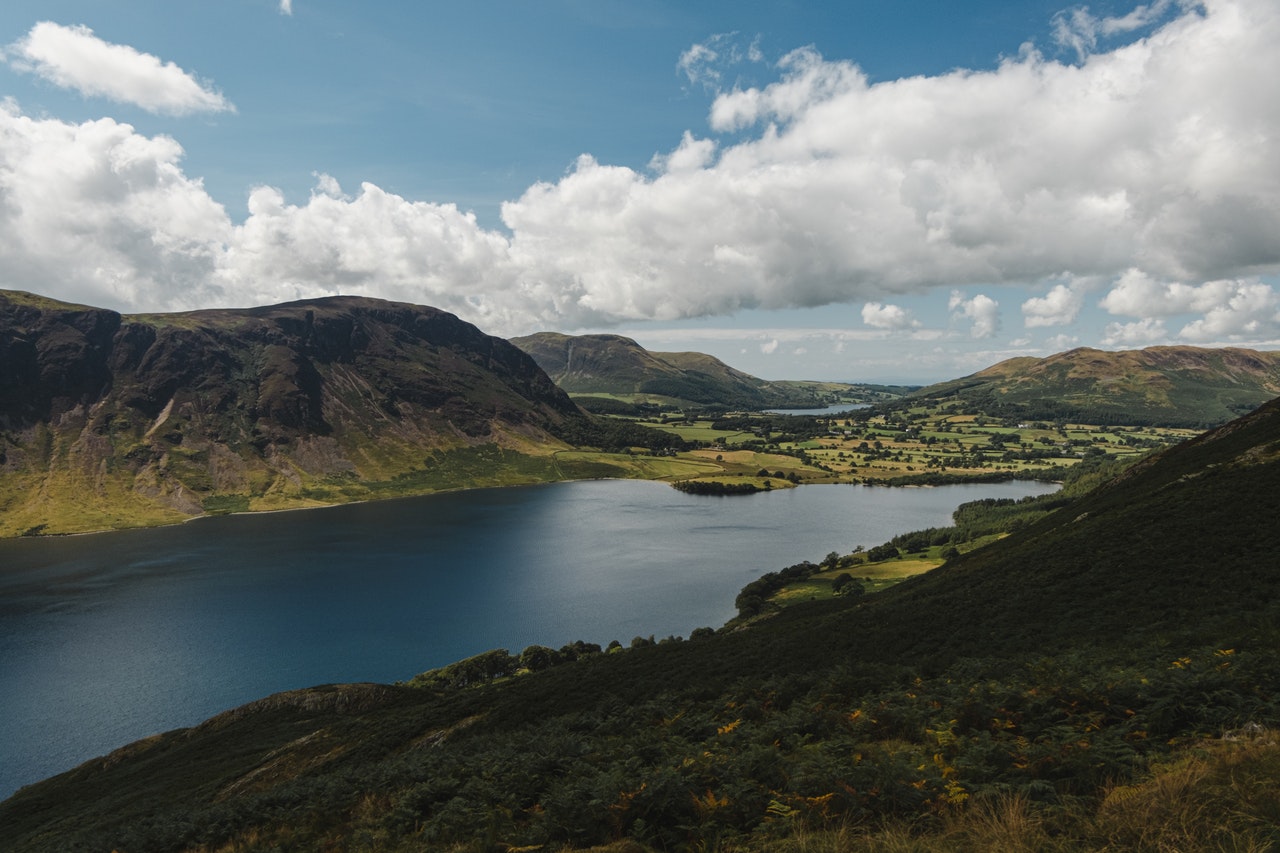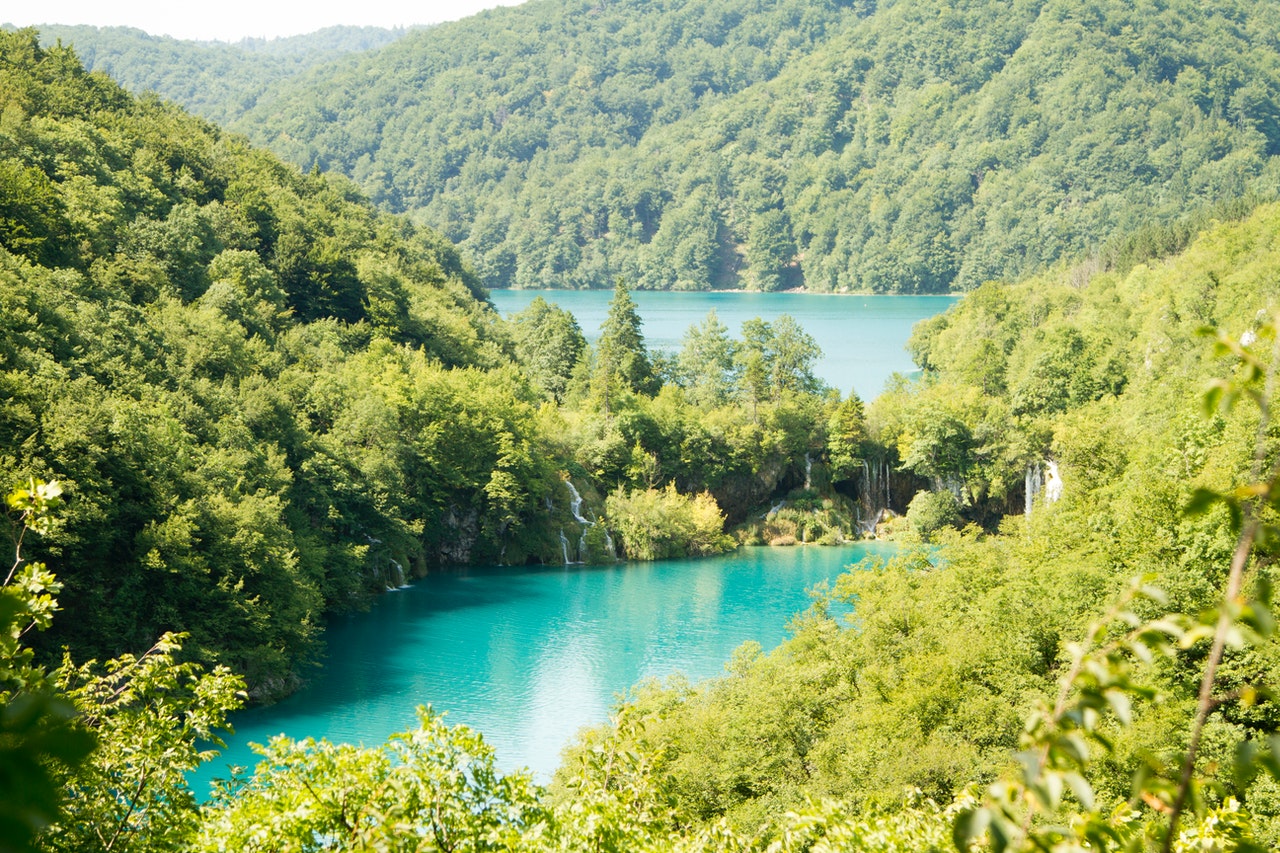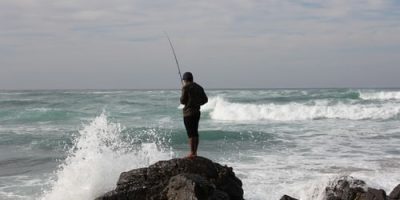
Perch is also known as the Yellow Perch, American River Perch, Stripped Perch, Coontail, or American Perch. This fish is native to North America and is a freshwater fish. It is easy to confuse Yellow Perch with Sauger or yellow fish. However, Perch can be differentiated from the other two fish by their deeper body form and ack of canines.
Perch is known to be the most frequently caught game fish in the State of Michigan.
This fish is popular in this region because you can find it in a majority of the freshwater bodies in Michigan. Perch is also popular because they’re easy to catch, not to mention their delicious taste. These fish are also versatile in their movements through the seasons and remain active even through Winter.
For this reason, many anglers can participate in ice fishing in different perch fishing points in Michigan.
In this article, we offer you several options we think are the best perch fishing points in Michigan.
Lake St. Clair
This is a freshwater lake found between the Province of Ontario, Canada, and the State of Michigan, U.S. Lake St. Claire covers 430 square miles and is part of the Great Lakes. This lake also connects Lakes Erie and Lake Huron which means there is a good flow of fish through the lakes.
Although all Great Lakes have a good number of Coontail, Lake St. Clair has a greater number of this fish. You can attribute this to abundant forage and stained water which supports the feeding habits of Perch.
The high population of Perch in Lake St. Clair means you can find this fish almost anywhere in this lake. Perch in this lake have like feeding the shore which makes it easy for anglers to engage in shore fishing. This fish also remain active even during winter, as is generally their nature. This means anglers can enjoy some ice fishing in this lake.
When fishing for Perch on Lake St. Clair, make sure to stay on the move and focus where you’re likely to find the fish. Other than the shore, you can also find Perch in the shallow flats of the lake preying on smaller fish.
The best angling method to use to catch Coontail in this lake is jigging. Try using baits such as minnows, leeches, crickets, and small crayfish.
Lake Gogebic
This lake is the best spot to fish for Perch if you’re looking to get good size perch. Most anglers who fish for Perch in Lake Gogebic might not get buckets full of this fish. Anglers, however, still love fishing for Perch in this lake due to their enormous size.
The size of the Perch in this lake is attributed to the fact that Lake Gogebic has a good supply of protein-rich forage. Perch is a carnivorous fish species, as such, they don’t feed on the forage. Instead, the forage helps support their diet by attracting other smaller fish that they prey on. The Perch in this lake also prey on aquatic insects which help them grow rapidly.
Perch in Lake Gogebic respond better to wigglers as bait compared to minnows. These fish also don’t respond well to aggressive jigging. Instead, try using what the local anglers call the dead sticking method where you let the wiggler rest motionless.
The Perch in Lake Gogebic bite so lightly that you can barely feel them when your tight line. You will, therefore, also need to use a spring bobber to detect when the Coontail bite the wigglers.
During winter, you can fish for Perch in this lake that is feeding in waters that are 10 to 20 feet deep. You can also try fishing around the fish shelters abundantly place in the lake. As the season progresses, focus more on the center of the lake where the water is deeper and the Perch schools concentrate.
Glen Lake

Glen Lake is located in Leelanau County and is made up of Big Glen Lake and Small Glen Lake. Big Glen Lake has more of a circular shape and covers 4871 acres while Little Glen Lake covers 1415 acres has a more elongated shape. Both lakes are connected through channels at the Narrows and both drain into Lake Michigan.
Both lakes are great spots for Perch fishing and especially in the winter. Little Glen freezes up first and Big Glen freezes up later as Winter progresses. The perfect place to try and catch jumbo size Perch is where Little Glen narrows into Big Glen. Perch caught at this point range between 10 to 15 inches.
This is also a great spot to fish for Coontail as a great number of the fish tend to migrate from Big Glen into Little Glen as the season change during late Fall and early Winter. This increases your chances of catching a good number of Perch. You should, however, be cautious when fishing at this point.
Big Glen freezes at a slower rate than Little Glen due to its depth. This lake also has less structure than its counterpart but you can still catch good-sized Perch in it. As Winter begins, Perch in Big Glen tend to prefer feeding in water that is 5 to 25 feet deep. This is usually in the northeast end of this lake. However, as Winter progresses, Coontail schools concentrate in waters that are 35 to 50 feet deep.
Mullet Lake
This lake is found in Cheboygan County, Michigan, and covers 16,630 acres. Due to its size, Mullet Lake receives less angling pressure and is a great spot to fish for decent size Yellow Perch.
There are four great spots you can angle for Perch in this lake. The first spot is Scott Bay which is located on the southern end of the Lake. Scott Bay is bordered by Red Pine Point to the east and Parrot Point to the west.
The diverse structure of Scott Bay makes it a favorable point for Perch fishing. This location has deep water flats, a drop-off, and a saddle. Scott bay is also deep enough for Perch schools to roam freely as they prey. There’s also an island straight across Scott Bay that is just the right depth for Perch schools to concentrate.
You can also try fishing on the western shoreline of the lake between Long Point and Veery Point. The structure of this point is also conducive for Coontail schools.
The other fishing point in Mullet Lake that you should try angling in is at the northern point of the lake. This point borders the Public Launch and Doge Point. This fishing point has cabbage weeds, sand, and flats that can be between 10 to 30 feet deep.
Appropriate fishing techniques in Mullet Lake include jigging with wigglers or minnows. You can also use slip bobbers, plain hooks, or teardrop, or a small spoon.
Lake Antoine
This lake covers 748 acres and is found in Dickinson County, Michigan. It is not the largest or deepest lake in Michigan but it has a fairly good number of decent size Perch. This is because it has organic matter at its bottom and evenly distributed aquatic vegetation. These attract small fish and aquatic insects that Coontail prey on.
The best time to fish for Perch in this lake is between 9:00 a.m. to 11:00 a.m. and 2:00 p.m. to 4:00 p.m. During these periods the weather and barometric pressure are just right to support the activity of the fish.
Great fishing points in this lake include the western shore, the island to the southern shore, and the manmade rock bar to the northeastern end of the lake. Popular fishing methods used to catch Perch in this lake include jigging with live bait, Thunder-sticks, soft plastics, and Rapalas.
Crystal Lake

Crystal Lake is Michigan’s ninth largest lake and it covers 9,854acres. This lake has an interesting history. In 1873, there was an unsuccessful attempt to create a channel between Lake Michigan and Crustal Lake. This resulted in the exposure of Crystal Lake’s sandy beaches and the lowering of its water level.
Other than its interesting history, this lake is known to be a great spot for Perch fishing. However, anglers who are 17 years and above require a fishing license from the Michigan Department of Natural Resources to fish in Crystal Lake. The fishing license is, however, waivered during the annual Michigan February Free Fishing weekend.
Coontail is among the most abundant fish species in this lake and grows to over 12 inches in length. The Perch schools continue to be active through the different seasons but can be found in different points of the lake. This lake takes a longer time to freeze due to its large size. However, once frozen, it offers amazing Perch fishing.
Great fishing points to angle for Perch during winter in this lake include Beulah to the eastern end of the lake and Railroad Point. You can get up to 14-inch Perch at these points.
The best fishing methods to use in this lake are trolling and jigging with live minnows. The bigger the minnows you use the larger the Perch you will catch.
Skegemog Lake
This lake borders three counties in Michigan; Antrim County, Kalkaska County, and Grand Traverse County. It covers 2,766 acres and is 29 feet deep. Skegemog is an Algonquin name that means the meeting of waters. Skegemog Lake is part of the lower chain of Antrim County and connects to Elk Lake, Torch River, and subsequently to Lake Michigan.
The strategic position of Skegemog Lake in this chain ensures there is a steady flow of fish in the lake.
This lake has both narrow and deep points which creates a diversity of fishing points. The eastern part of the lake, however, is the best fishing point. This fishing point has several submerged items which offer good hiding places for Perch and other fish. You can also have a good catch off the south shore or north of the lake where it is deepest.
Trolling is the best fishing method to catch Coontail in this lake. Using wigglers or a teardrop will help you catch large numbers of Perch in this lake. However, you should use big minnows if you want to catch jumbo Yellow Perch.
Hamlin Lake
This lake covers 4,990 acres and is located in Mason County, Michigan. This lake is popular for Bluegill fishing. As a result, not many people consider it a Perch fishing paradise in winter. A good time to fish for Perch in Hamlin Lake is between January and March. During this period, the lake is frozen and anglers can engage in ice fishing.
Perch caught in this lake can range between 8 to 12 inches in length.
The best fishing position in Hamlin is the lower lake which has steep contours, flats, and can reach up to 80 feet deep.
The best fishing method is jigging with large minnows and a slip bobber. You can also use jigging spoons and teardrops.
Burt Lake
This lake covers 17,260 acres and is a pristine destination for Perch winter fishing. Burt lake has sufficient forage and a few weeds that attract mayfly lava, minnows, and aquatic insects that Perch prey on.
Key points for ice fishing include Maple Bay and the flats on the western point of Greenman Point.
You are guaranteed to make a catch by jigging with big minnows.
Hubbard Lake
This lake covers 8,850 acres. Despite its expansive water, Perch fishing in this lake can be a bit difficult. This, however, doesn’t mean you won’t be able to catch decent size Perch.
Great fishing points during the midwinter season are the northern and southern points of the lake. You can also try fishing in the North and East Bays on first ice and at Harwood Point and Churchill Point as the season progresses.
You can use the jigging method to catch Coontail in this lake. Preferred bait assortments you can use include minnows, wigglers, and wax worms.
We hope you make a grand catch; in whichever Perch fishing points you choose from this list.


